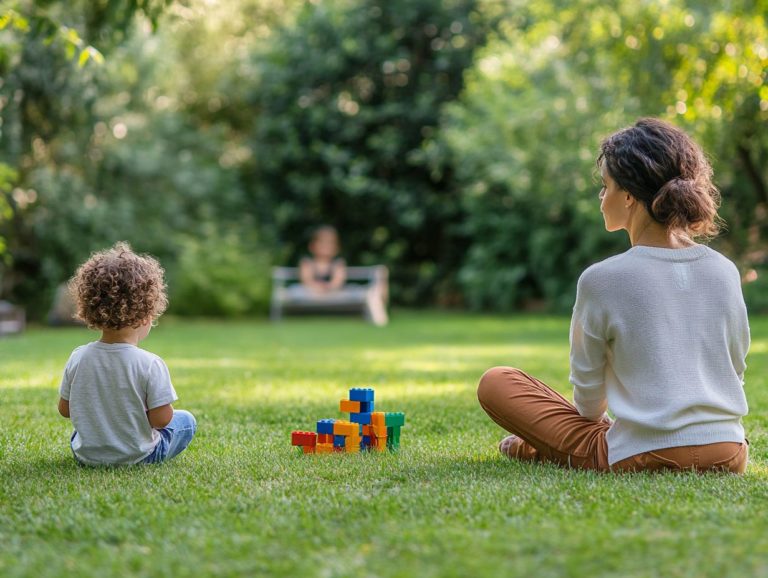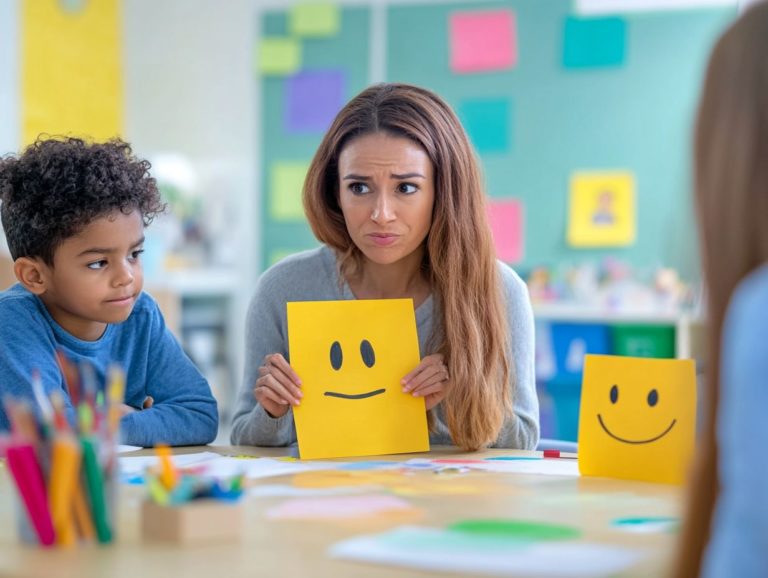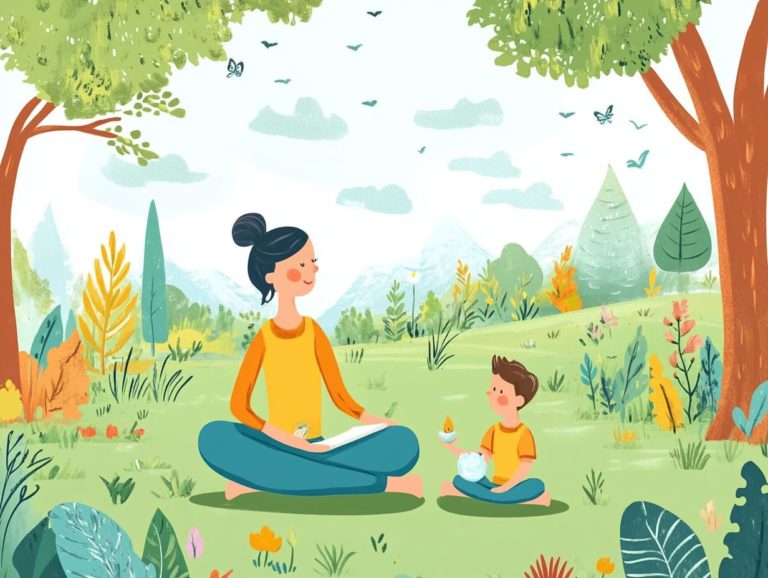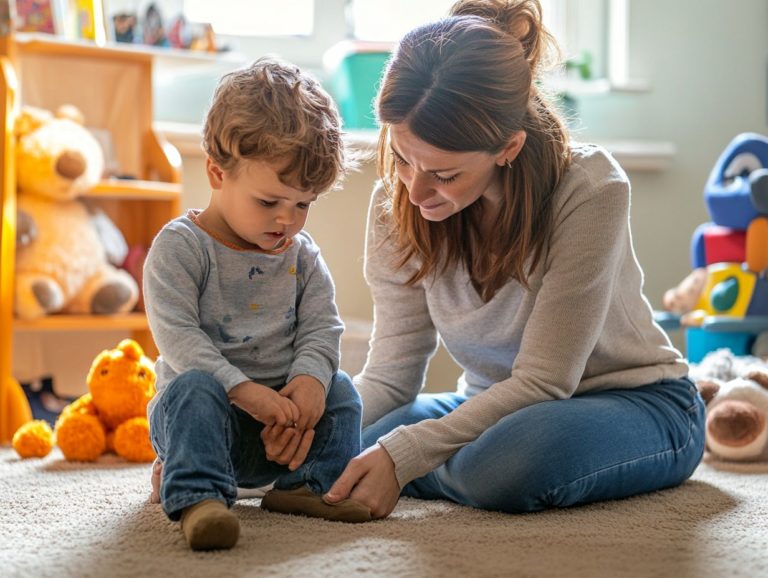How to Encourage Mindful Play?
In a fast-paced world brimming with distractions, the power of mindful play presents a refreshing escape for both children and adults. It reinforces the importance of mindfulness for kids in managing their mental health.
Mindful play helps develop essential skills like creativity and emotional control. This article delves into the significance of mindful play while offering practical tips for integrating it into your daily life, including mindfulness techniques and exercises suitable for children.
From crafting a calming environment to engaging in mindful activities together, you ll discover how fostering mindful play can enrich your child’s development, enhance their emotional regulation, and elevate their overall well-being.
Contents
Key Takeaways:
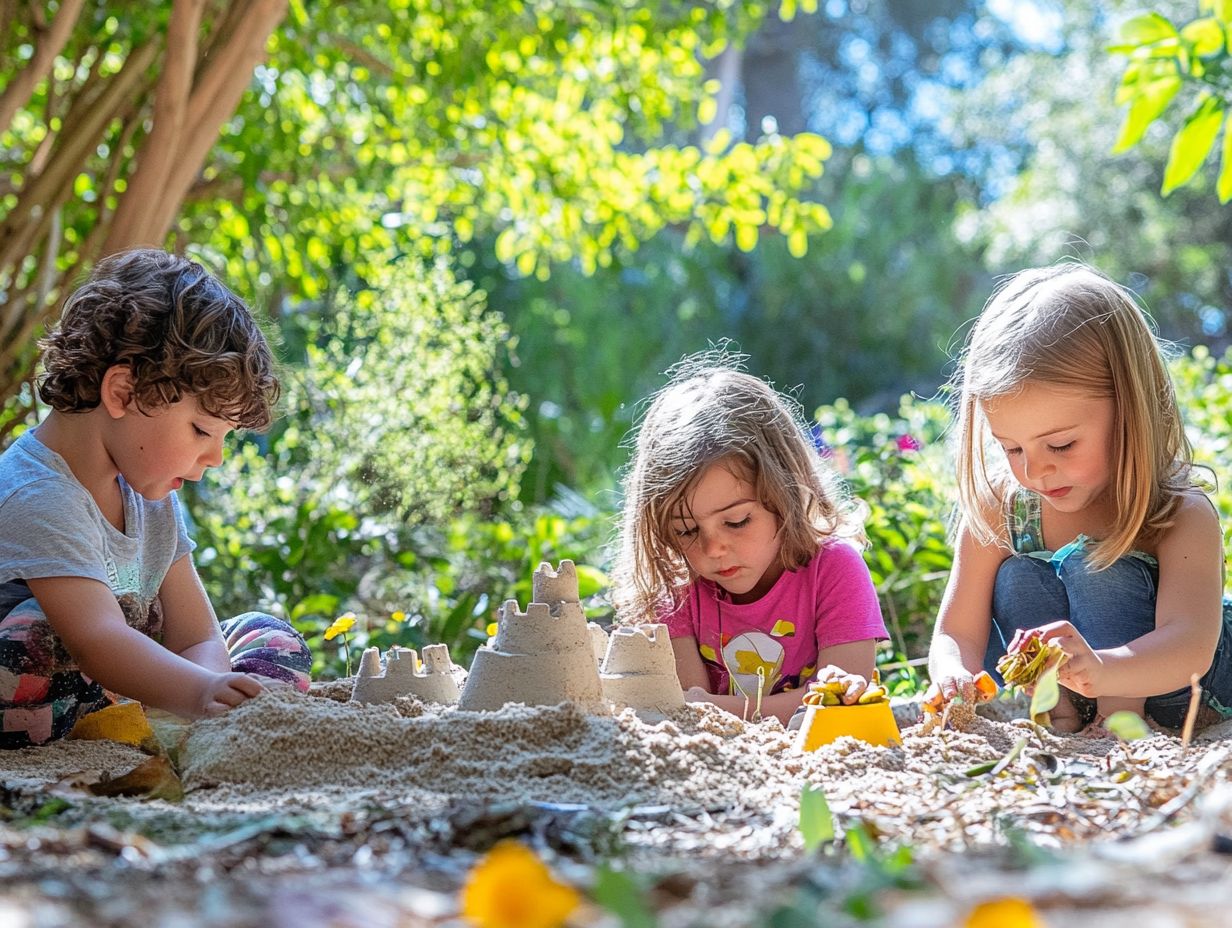
- Encourage mindful play by creating a safe and calm environment, providing open-ended toys, and being present and engaged with children to promote emotional growth and mental well-being.
- Try mindful activities such as breathing exercises, sensory play, coloring, yoga, and listening activities to promote mindfulness in children and teach them self-regulation skills.
- Mindful play can benefit children’s development by improving emotional regulation, encouraging creativity, developing social skills, and enhancing cognitive abilities.
Why Is Mindful Play Important?
Mindful play is crucial for your child as it nurtures emotional regulation, enhances mental well-being, and sparks creativity through intentional, mindful activities, including mindfulness exercises and guided meditations.
Embrace this approach! Your child will develop essential social skills, sharpen their focus, and cultivate empathy attributes that are vital for healthy emotional growth.
Integrating mindfulness into play can elevate your child’s daily routine, transforming it into a joyful experience that significantly contributes to their overall development and mental well-being.
Techniques like guided meditations or focus exercises during playtime equip your child with valuable tools to manage stress and anxiety, establishing a solid foundation for emotional awareness and resilience, crucial for their mental health.
What Are the Benefits of Mindful Play?
The benefits of mindful play for children are truly remarkable. They profoundly influence emotional regulation and mental well-being. When you encourage your child to engage in mindfulness activities like kids’ meditation or focus exercises they learn to manage stress and anxiety, paving the way for emotional growth and resilience.
These practices also nurture empathy, enabling them to form deeper connections with their peers and enhancing their social skills. Children at different developmental stages, such as preschoolers, elementary schoolers, middle schoolers, and high schoolers, can all benefit from tailored mindfulness activities.
Such activities empower your child to gain a better understanding of their feelings while teaching them how to handle challenging situations effectively. For instance, younger children can enjoy simple breathing exercises or story-driven yoga sessions that introduce them to relaxation and focus.
As they mature, integrating more complex practices like guided visualization or mindful journaling can be incredibly beneficial.
These strategies not only act as effective tools for stress management but also equip your child with stronger emotional regulation skills, preparing them to tackle the various challenges life throws their way.
How Can You Encourage Mindful Play?
Encouraging mindful play in children demands your intentional efforts as a parent or educator. Seamlessly integrate mindfulness techniques into their daily routines. By creating opportunities for mindful activities that nurture creativity and emotional regulation, you can significantly enhance their engagement and overall mental well-being.
Mindfulness for kids can be introduced through various developmental stages, including preschool mindfulness, elementary mindfulness, and more.
This can be accomplished through simple yet effective practices, such as guided meditations, mindfulness games, and establishing a quiet space for reflection. In doing so, you foster a positive environment that supports their emotional growth and development.
1. Create a Safe and Calm Environment
Creating a safe and calm environment is essential for fostering mindful play. It allows children to feel secure and open to engaging in mindfulness techniques and emotional regulation practices.
A quiet space filled with calming practices can enhance emotional awareness, helping kids explore their feelings without distractions.
Incorporating elements like:
- Soft lighting
- Comfortable seating
- Natural sounds such as gentle music or nature sounds
- Aromatherapy diffusers releasing soothing scents
- Tactile objects like textured fabrics or calming toys
These foundational elements foster an inviting atmosphere for preschool mindfulness and elementary mindfulness activities. Plus, they transport you to a peaceful state of mind.
Ultimately, by cultivating such an enriching space, you create an amazing foundation for children to navigate their emotions. This environment encourages them to embrace mindfulness practices in a meaningful and enjoyable way, promoting self-regulation and emotional awareness.
2. Provide Open-Ended Toys and Materials
Providing open-ended toys and materials is a powerful way to foster creative play and encourage mindfulness activities in children. These versatile resources invite exploration and ignite imagination, allowing kids to engage in mindful play that nurtures their emotional growth.
When children lead their play, they re more likely to have a positive and enriching mindfulness experience.
Open-ended toys like:
- Blocks
- Art supplies
- Natural materials
These offer a unique platform for children to express themselves while cultivating their creativity. Unlike conventional toys with set purposes, these resources encourage kids to develop their own projects and explore new ideas, ultimately sharpening their thinking skills.
Incorporating mindfulness activities into play not only aids in emotional regulation but also builds resilience. As children immerse themselves in these enriching experiences, they cultivate a deeper understanding of their emotions, enhancing their overall well-being.
These positive mindfulness experiences play a significant role in teaching mindfulness to children.
3. Be Present and Engaged
Being present and engaged with children during play is essential for reinforcing mindfulness. When you model mindfulness techniques like active listening and deep breathing you demonstrate the importance of emotional awareness.
This engagement strengthens the parent-child bond, making the experience more meaningful.
Creating a space where your children feel safe to express themselves is crucial. Enhance your mindfulness during playtime by setting aside distractions, such as smartphones, and focusing fully on the activity at hand.
It’s beneficial to openly communicate your feelings during play, using phrases like, “I feel happy when we play together!” This not only teaches emotional vocabulary but also demonstrates how to recognize and express emotions.
Incorporating moments of stillness perhaps by taking a few deep breaths together reinforces the importance of mindfulness and presence.
Ultimately, these practices cultivate a nurturing environment in which children learn to navigate their own emotions with clarity and ease, enhancing their body awareness and emotional regulation.
4. Encourage Exploration and Curiosity
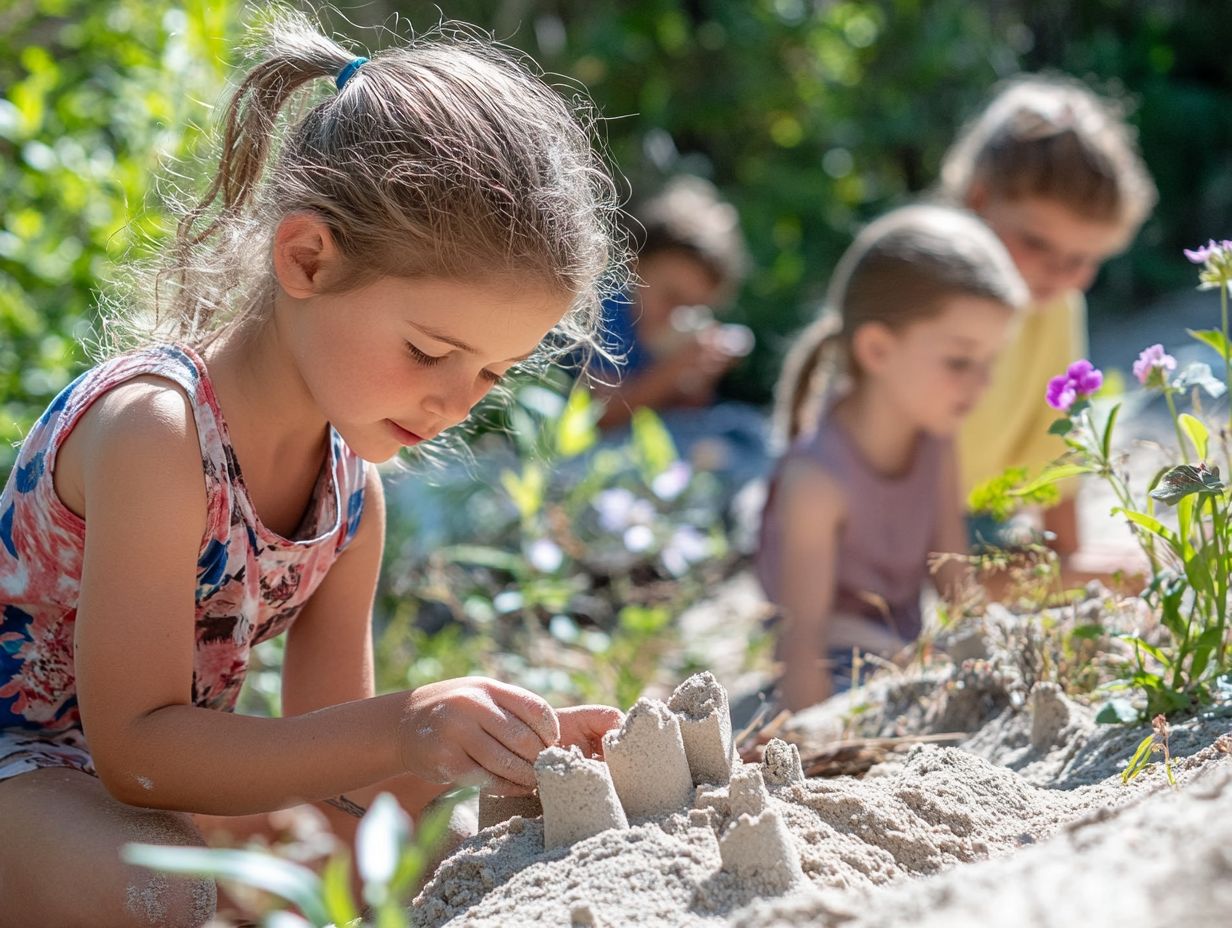
Encouraging exploration and curiosity in children is crucial for crafting engaging mindfulness games. These games ignite their imagination and enhance creativity.
When you allow children the freedom to explore, they cultivate a sense of wonder and build a stronger connection to their environment. This significantly enriches their mindful play experiences and is particularly effective in promoting playground mindfulness and active play.
This exploration nurtures creativity and fosters emotional growth, enabling children to express themselves authentically and improve their mental health.
By incorporating activities like nature scavenger hunts or open-ended art projects, you can spark their interest and inspire them to interact with the world around them. Mindfulness games such as I Spy can bolster their focus and observation skills, guiding them to notice details they might otherwise overlook. These fun activities boost their mind-body awareness and create exciting experiences!
Incorporating storytelling sessions paired with sensory play can help children relate to and reflect on their feelings. This further deepens their mindfulness practice and emotional awareness.
Creating an environment that cherishes curiosity paves the way for richer, more meaningful play experiences. This supports children’s emotional and cognitive development in profound ways, particularly for mindfulness routines and emotional regulation.
5. Practice Mindful Activities Together
Engaging in mindful activities together can significantly elevate the mindfulness experience for both you and your children. It paves the way for shared growth and learning. Activities like kids’ meditation, guided meditations, and body scans which involve focusing on different parts of the body to relax not only foster relaxation but also strengthen family bonds. This nurtures a deeper sense of connection and understanding.
By participating in these practices, your children develop essential emotional regulation skills while cherishing quality time spent with you. Incorporating mindfulness benefits like anxiety reduction and gratitude practice can further enhance these moments.
These shared mindful moments create an ideal opportunity for you to model mindfulness and emotional awareness. You can guide your kids in navigating their feelings in a healthy manner. For example, integrating guided meditation sessions into your bedtime routine can provide a soothing conclusion to the day, allowing your family to unwind together.
Practicing calming breath exercises as a family can fill your home with a sense of tranquility, making it a safe haven for emotional expression. Including mindful routines in daily life promotes relaxation techniques that benefit everyone.
Over time, these mindful interactions can fortify family ties. They help your children feel supported while equipping them with techniques they can independently utilize to manage stress and anxiety. This is essential for emotional regulation and promotes a balanced family environment.
What Are Some Mindful Activities to Try?
Explore a range of mindful activities that your family can enjoy together. Each activity is thoughtfully crafted to enhance mindfulness and promote emotional awareness in children. From preschoolers to high schoolers, these activities are designed for all age groups, including middle school mindfulness and high school mindfulness techniques.
By engaging in mindfulness exercises like kids meditation, body awareness practices, and mindful listening activities, you can cultivate a richer understanding of emotions and improve your children’s focus. Activities such as mindful eating and the Balance app can also be beneficial.
This, in turn, paves the way for better emotional regulation and overall mental wellbeing. Start today to see immediate benefits!
1. Mindful Breathing Exercises
Mindful breathing exercises serve as powerful tools for fostering emotional regulation and relaxation in children. Techniques like deep breathing enable kids to sharpen their focus and manage anxiety. This gives them the power to develop mindfulness skills that will benefit them throughout their lives.
Incorporating these practices into daily routines calms the mind and enhances overall mental wellbeing, promoting better focus and improved emotional awareness. These exercises promote a profound sense of presence, assisting young minds in recognizing their thoughts and feelings without becoming overwhelmed.
Techniques such as the 4-7-8 breathing method which involves inhaling for 4 seconds, holding for 7 seconds, and exhaling for 8 seconds and box breathing work wonders. They relax the body while also clearing the mental fog. Such relaxation techniques are essential for maintaining a balanced mental state.
Regularly engaging in these relaxation techniques can substantially diminish stress levels, building resilience in the face of adversity. Ultimately, by embracing mindful breathing, children become adept at navigating their emotions, laying the groundwork for emotional intelligence that will serve them well in both their present and future endeavors. Kids of all ages can truly benefit from these practices!
2. Sensory Play with Nature
Sensory play with nature presents a remarkable opportunity for you to encourage your child to engage in creative exploration while enhancing their mindfulness. By allowing them to interact with natural elements like soil, water, and plants, you help them forge a connection with their environment. They can reap mindfulness benefits such as improved focus and heightened emotional awareness.
This kind of play invites children to fully engage their senses, fostering a profound appreciation for the world surrounding them. Such activities incorporate elements of outdoor learning and educational play environments.
As they manipulate these natural materials, they not only refine their fine motor skills, but also immerse themselves in imaginative scenarios that spark outdoor learning. The textures of leaves, the soothing sounds of rustling grass, and the invigorating aroma of fresh earth stimulate their curiosity and wonder, facilitating emotional growth through exploration and discovery.
Encouraging outdoor engagement nurtures an awareness of environmental stewardship, reinforcing healthy relationships with nature. This mindful interaction not only alleviates stress and promotes relaxation but also gives your child the power to express themselves creatively, paving the way for holistic development.
Don t miss the chance to let your child connect with nature it’s an adventure waiting to happen!
3. Mindful Coloring or Drawing
Mindful coloring or drawing can be a remarkable mindfulness exercise that nurtures creativity and emotional awareness in children. By concentrating on the colors and patterns, you can help them enter a state of calm and reflection. This enables them to express their feelings freely while developing essential emotional regulation skills.
This creative play activity provides a serene space for mindfulness practices that enhance their overall well-being. Encouraging this form of artistic expression aids in stress management and cultivates their ability to recognize and articulate their emotions.
Engaging in these mindfulness exercises can significantly enhance concentration and self-discipline, as they learn to remain present while exploring their creative instincts. This is especially beneficial for middle school and high school mindfulness, where students are learning to cope with more complex emotions and social situations.
As children experience the joy of creation, they gain a sense of accomplishment that boosts their confidence and fosters emotional healing. Ultimately, incorporating mindful coloring or drawing into their routine transforms art into a powerful tool for promoting resilience and deeper emotional awareness. Expressive arts like this provide a creative outlet that supports mental health and emotional expression.
4. Yoga or Stretching
Benefits of Yoga and Stretching
Incorporating yoga or stretching into your child’s routine can enhance their body awareness and mindfulness. These activities promote physical health and encourage managing their feelings, allowing children to connect with their bodies meaningfully.
Techniques for Mindful Movement
Practicing simple yoga poses and stretches helps children release tension, ultimately improving their overall mental well-being. Watch your child thrive as they learn to listen to their body, recognizing when they are tense or fatigued, which fosters a deeper understanding of their personal boundaries and capabilities.
As they become adept at various poses, they cultivate concentration and focus essential skills that will serve them well in academic and social settings. Adding breathing exercises to these practices further enriches their mindfulness, giving them the power to manage stress and emotions more effectively.
This blend of body awareness and mindfulness gained through yoga and stretching lays the foundation for healthier habits, enhanced emotional resilience, and a more positive outlook on life. Incorporating body scan techniques can further enhance these benefits.
5. Mindful Listening Activities
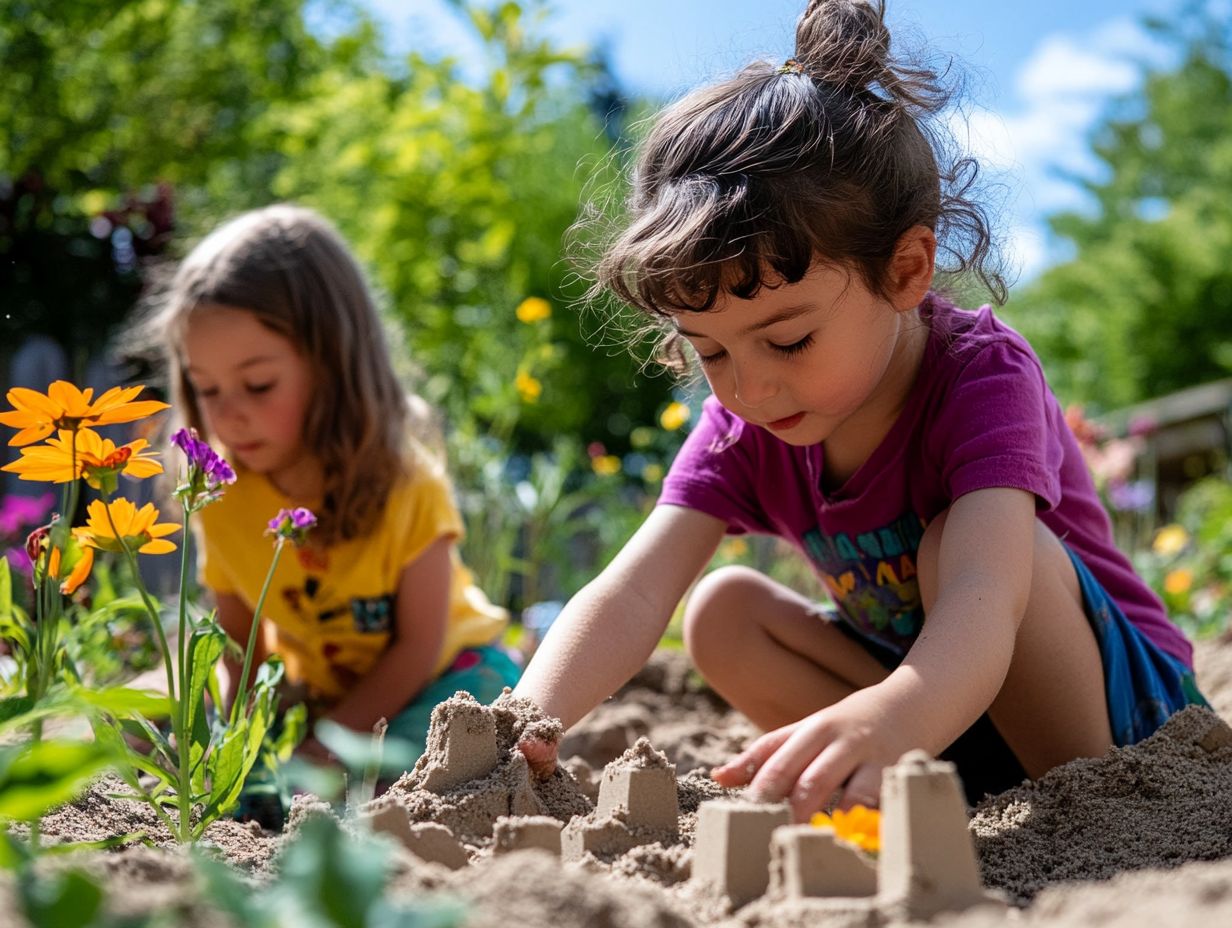
Mindful listening activities are essential for nurturing children’s emotional awareness and social skills. By encouraging them to focus on various sounds be it music, nature, or spoken words they engage in mindfulness exercises that sharpen their attention and enhance their empathy.
This practice hones their listening abilities and fosters meaningful connections with others, providing a solid foundation for healthier social interactions. Such activities can be incorporated into both middle school mindfulness and high school mindfulness programs.
These exercises encourage children to pause and reflect on what they hear, offering them a valuable opportunity to process their emotions and thoughts. As they immerse themselves in active listening, they become more attuned to the feelings behind the words, which significantly nurtures their emotional intelligence.
This heightened awareness empowers them to respond more thoughtfully in social situations, effectively reducing misunderstandings and conflicts. Practicing mindful listening can greatly improve focus and empathy among children.
As a result, these mindful activities cultivate cooperation and compassion among peers, enabling children to forge deeper, more supportive relationships an impact that can profoundly enhance their overall well-being.
How Can Mindful Play Benefit Children’s Development?
Mindful play presents substantial advantages for children’s development, profoundly influencing their emotional growth, social skills, and cognitive abilities.
By participating in mindfulness activities, children learn to navigate their emotions more effectively and enhance their capacity for empathy. These activities benefit children across various age groups.
These benefits collectively support a holistic approach to development, enabling kids to flourish in multiple facets of life, whether it s mastering emotional regulation or achieving academic success.
1. Improves Emotional Regulation
Mindful play significantly enhances emotional regulation in children. It empowers them to recognize and manage their emotions, which is crucial for their mental health.
Activities like mindful breathing and creative arts nurture this growth. When overwhelmed, deep breathing helps them calm down and think clearly.
Structured play with mindfulness elements gives children tools to express their emotions. This fosters resilience and strengthens their relationships.
2. Encourages Creativity and Imagination
Mindful play encourages creativity and imagination. It provides a safe space for children to explore their feelings.
By including storytelling and role-playing, children engage in activities that spark new ideas. This also helps them identify and process their emotions.
Interacting with peers during creative play enhances social skills. Mindful play equips children with lifelong skills for emotional expression.
3. Develops Social Skills
Mindful activities help children develop important social skills like empathy. Through shared play, they learn to connect with others and express feelings appropriately.
Cooperative games, like building a community project, promote teamwork. Role-playing helps kids empathize with different viewpoints.
Mindful play reinforces social skills, creating a supportive environment. This helps children feel valued while navigating social dynamics.
4. Enhances Thinking Skills
Mindful play enhances children’s thinking skills by engaging them in focus exercises and mindfulness techniques that promote concentration and critical thinking. These practices also support academic success and help children develop essential skills for problem-solving and decision-making.
As they learn to manage their thoughts and attention, you ll notice improved emotional regulation and overall mental well-being, which are key components of emotional health. This holistic approach nurtures a deeper understanding of their surroundings, igniting their curiosity and creativity.
When children immerse themselves in activities that require focused attention, they naturally refine their ability to analyze situations critically. Incorporating educational play environments and outdoor learning can further enhance these benefits.
Integrating mindfulness techniques helps children cultivate a sense of presence, enabling them to navigate distractions effectively an invaluable skill in today s fast-paced world.
By nurturing these thinking skills through playful engagement, children become better equipped to tackle challenges, laying a strong foundation for lifelong learning and healthy emotional responses. Utilizing resources like the Balance app can provide structured mindfulness exercises to support this development.
5. Promotes Mindfulness in Daily Life
Promoting mindfulness in daily life is one of the most significant benefits of engaging in mindful play. As you incorporate mindfulness practices into your child’s routine, they learn to navigate challenges more effectively, fostering emotional growth and enhancing their stress management skills.
This daily practice cultivates a mindset that values presence and awareness, which will serve them well throughout their lives. Mindful play acts as a gateway for children to explore their emotions and reactions in a safe and enjoyable way.
You can nurture this mindfulness approach by introducing simple activities like nature walks, where children can observe their surroundings, or by engaging in breathing exercises disguised as playful games.
Establishing a routine with focused playtime such as guided imagery or mindful coloring enriches their emotional toolkit. Encouraging open discussions about feelings during these activities helps children articulate their emotions, leading to improved social skills and self-awareness.
By weaving mindfulness into everyday activities, you equip children with valuable skills that extend far beyond play, fostering their overall focus and emotional well-being.
Frequently Asked Questions
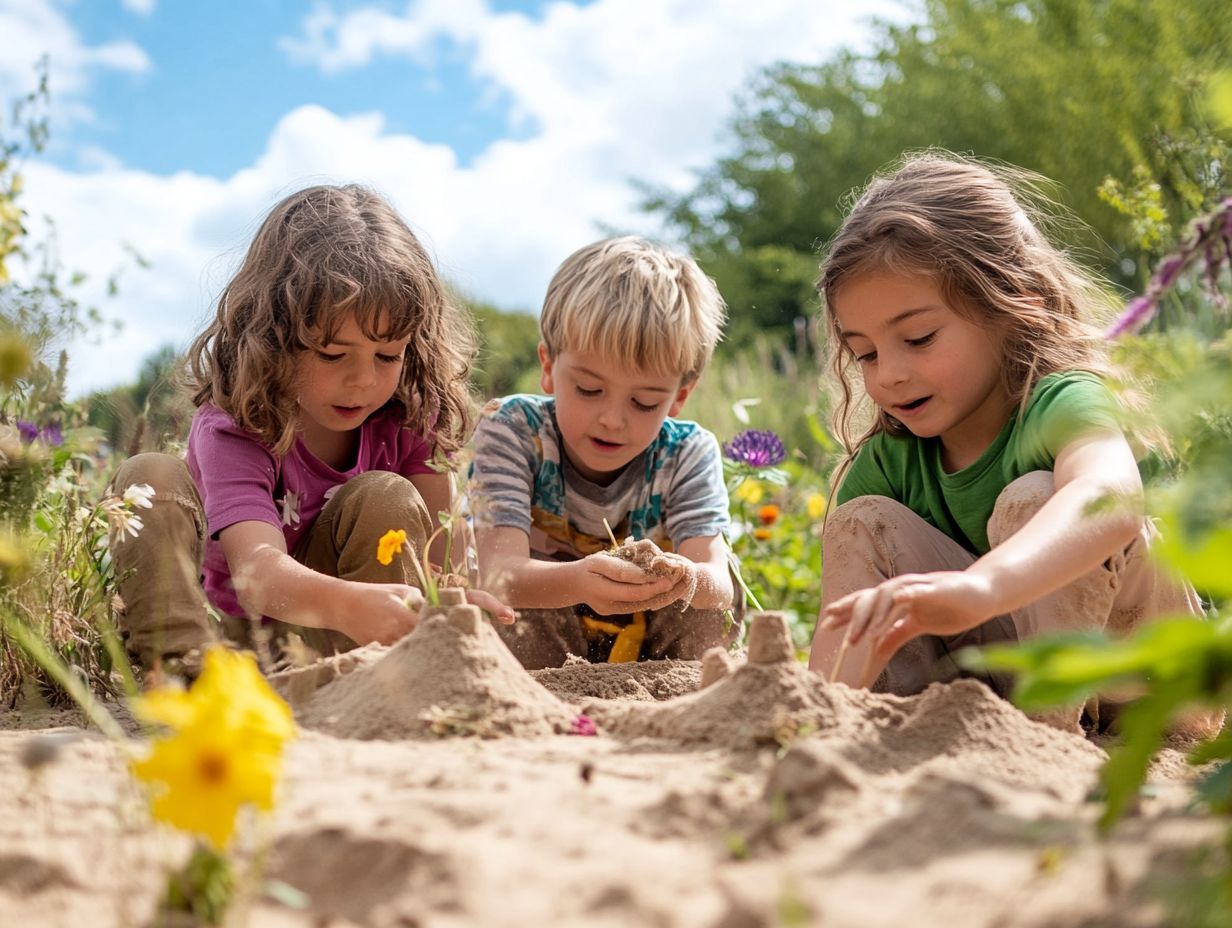
What is Mindful Play?
Mindful play is engaging in play with a focused and present mindset, fully immersing oneself in the activity.
Why is Mindful Play Important?
Mindful play creates a deeper, more meaningful experience, promoting relaxation, creativity, and overall well-being. It also helps reduce stress and increase self-awareness.
How Can I Encourage Mindful Play in Children?
Encourage mindful play by creating a calm, distraction-free environment with minimal technology and noise. Providing open-ended toys or materials fosters creativity and imagination.
Can Mindful Play Be Incorporated into Daily Routines?
Yes! Encourage children to focus on simple daily tasks like eating and brushing their teeth. Making these tasks mindful experiences promotes relaxation and reduces stress for both children and adults.
Are There Any Specific Activities That Promote Mindful Play?
Yes! Activities such as yoga, meditation, art, and music can all promote mindful play. It’s important to choose activities that encourage focus, creativity, and self-expression.
How Can I Lead by Example and Practice Mindful Play with My Child?
Lead by example by engaging in mindful play with your child. Set aside time to play without distractions and fully immerse yourself in the activity. Show them how to be present and focused, and they will likely follow your lead.

